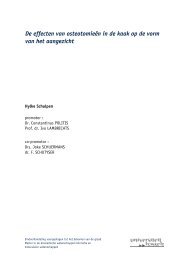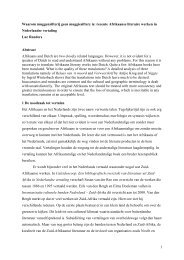Planning Problems in Intermodal Freight Transport ...
Planning Problems in Intermodal Freight Transport ...
Planning Problems in Intermodal Freight Transport ...
Create successful ePaper yourself
Turn your PDF publications into a flip-book with our unique Google optimized e-Paper software.
traffic conversion method and a freight flow consolidation method. First, freight flows are<br />
converted from tonnes to numbers of load-units. Second, freight volumes are assigned to<br />
routes and consolidated with the objective to f<strong>in</strong>d term<strong>in</strong>al locations that will attract sufficient<br />
freight to run daily tra<strong>in</strong>s to and from the term<strong>in</strong>al. The model is applied to the design of an<br />
<strong>in</strong>land road and rail term<strong>in</strong>al network <strong>in</strong> the Netherlands. Racunica and Wynter [29] discuss<br />
the optimal location of <strong>in</strong>termodal hubs <strong>in</strong> a hub-and-spoke network with (semi-) dedicated<br />
freight rail l<strong>in</strong>es. The problem is formulated as a frequency service network design model<br />
with frequencies of service as derived output. A concave cost function is applied <strong>in</strong> order to<br />
capture cost reductions obta<strong>in</strong>ed by consolidation at hub nodes. The result<strong>in</strong>g model is a non-<br />
l<strong>in</strong>ear, mixed-<strong>in</strong>teger program. Next, the concave <strong>in</strong>creas<strong>in</strong>g cost terms are approximated by a<br />
piecewise l<strong>in</strong>ear function <strong>in</strong> order to obta<strong>in</strong> a l<strong>in</strong>ear program. This l<strong>in</strong>ear program is solved by<br />
two variable-reduction heuristics, which solve a sequence of relaxed subproblems. F<strong>in</strong>ally the<br />
solution method is tested on a case study of the Alp<strong>in</strong>e freight network.<br />
Second, simulation may be used to def<strong>in</strong>e term<strong>in</strong>al locations. Me<strong>in</strong>ert et al. [30]<br />
<strong>in</strong>vestigate the location of a new rail term<strong>in</strong>al <strong>in</strong> a specific region <strong>in</strong> which three rail term<strong>in</strong>als<br />
are already located. The authors specifically consider the impact of the location of the new<br />
term<strong>in</strong>al on drayage length and time. In order to accomplish this, a discrete event simulation<br />
tool is developed which provides the ability to address <strong>in</strong>dividual rail term<strong>in</strong>al design<br />
considerations such as handl<strong>in</strong>g capacity required, regional design considerations related to<br />
term<strong>in</strong>al location and truck<strong>in</strong>g distances, and demand distribution over time. A significant<br />
feature of this simulator is that, rather than modell<strong>in</strong>g only the operation of the term<strong>in</strong>al, it<br />
also models the drayage to and from regional dest<strong>in</strong>ations.









